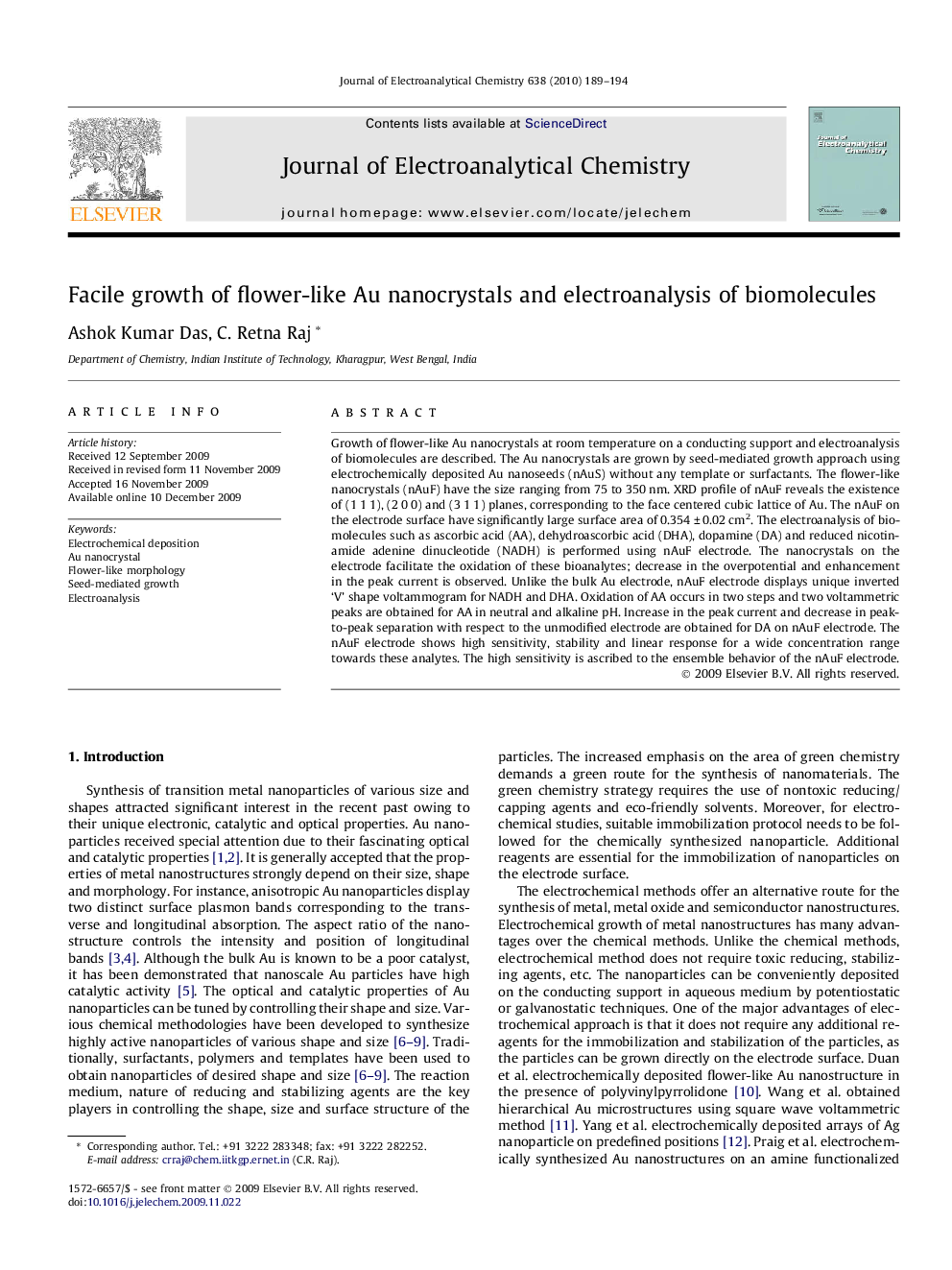| Article ID | Journal | Published Year | Pages | File Type |
|---|---|---|---|---|
| 219984 | Journal of Electroanalytical Chemistry | 2010 | 6 Pages |
Growth of flower-like Au nanocrystals at room temperature on a conducting support and electroanalysis of biomolecules are described. The Au nanocrystals are grown by seed-mediated growth approach using electrochemically deposited Au nanoseeds (nAuS) without any template or surfactants. The flower-like nanocrystals (nAuF) have the size ranging from 75 to 350 nm. XRD profile of nAuF reveals the existence of (1 1 1), (2 0 0) and (3 1 1) planes, corresponding to the face centered cubic lattice of Au. The nAuF on the electrode surface have significantly large surface area of 0.354 ± 0.02 cm2. The electroanalysis of biomolecules such as ascorbic acid (AA), dehydroascorbic acid (DHA), dopamine (DA) and reduced nicotinamide adenine dinucleotide (NADH) is performed using nAuF electrode. The nanocrystals on the electrode facilitate the oxidation of these bioanalytes; decrease in the overpotential and enhancement in the peak current is observed. Unlike the bulk Au electrode, nAuF electrode displays unique inverted ‘V’ shape voltammogram for NADH and DHA. Oxidation of AA occurs in two steps and two voltammetric peaks are obtained for AA in neutral and alkaline pH. Increase in the peak current and decrease in peak-to-peak separation with respect to the unmodified electrode are obtained for DA on nAuF electrode. The nAuF electrode shows high sensitivity, stability and linear response for a wide concentration range towards these analytes. The high sensitivity is ascribed to the ensemble behavior of the nAuF electrode.
